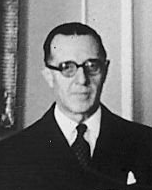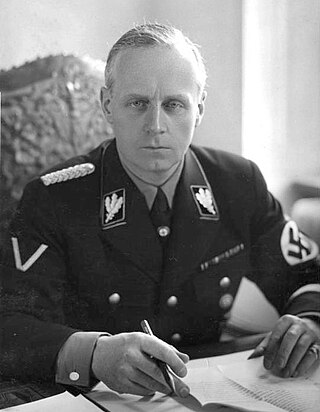
Ulrich Friedrich-Wilhelm Joachim von Ribbentrop was a German politician and diplomat who served as Minister of Foreign Affairs of Nazi Germany from 1938 to 1945.
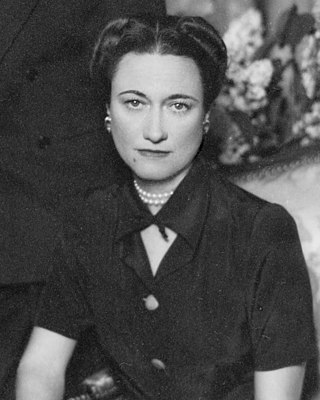
Wallis, Duchess of Windsor was an American socialite and wife of former king Edward VIII. Their intention to marry and her status as a divorcée caused a constitutional crisis that led to Edward's abdication.

In early December 1936, a constitutional crisis in the British Empire arose when King Edward VIII proposed to marry Wallis Simpson, an American socialite who was divorced from her first husband and was in the process of divorcing her second.

Ramón Serrano Suñer, was a Spanish politician during the first stages of the Francoist dictatorship, between 1938 and 1942, when he held the posts of President of the FET y de las JONS caucus (1936), and then Interior Minister and Foreign Affairs Minister. A neofalangist originally from the CEDA, Serrano Suñer came to embody the most totalitarian impetus within the regime. Serrano Suñer was known for his pro-Third Reich stance during World War II, when he supported the sending of the Blue Division to fight along with the Wehrmacht on the Russian front. He was also the brother-in-law of Francisco Franco's wife Carmen Polo, for which he was informally nicknamed Cuñadísimo or the "most brother-in-law".
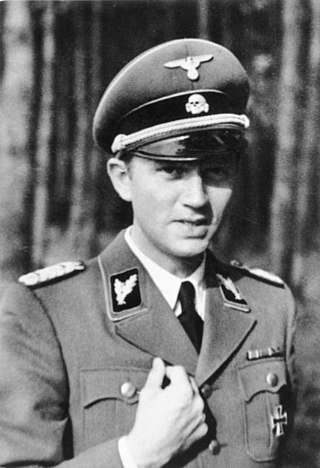
Walter Friedrich Schellenberg was a German SS functionary during the Nazi era. He rose through the ranks of the SS, becoming one of the highest ranking men in the Sicherheitsdienst (SD) and eventually assumed the position as head of foreign intelligence for Nazi Germany following the abolition of the Abwehr in 1944.
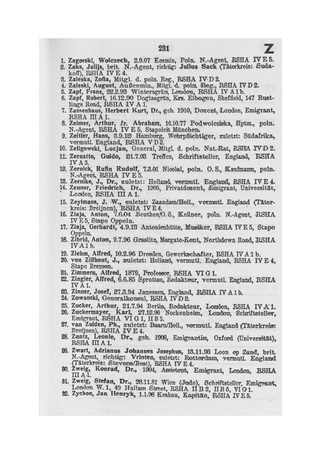
The Sonderfahndungsliste G.B. was a secret list of prominent British residents to be arrested, produced in 1940 by the SS as part of the preparation for the proposed invasion of Britain. After the war, the list became known as The Black Book.
Erich Kordt, was a German diplomat who was involved in the German Resistance to the regime of Adolf Hitler.
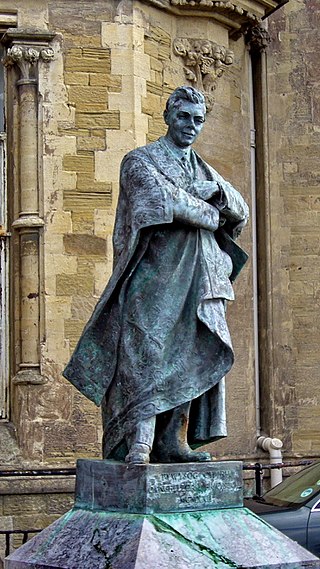
Edward VIII and Wallis Simpson have been depicted in popular culture, both biographical and fictional, following his abdication in 1936 and their marriage the following year.
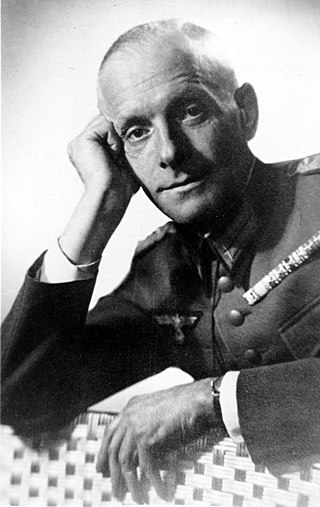
The Oster Conspiracy, also called the September Conspiracy, of 1938 was a proposed plan to overthrow German Führer Adolf Hitler and the Nazi regime if Germany went to war with Czechoslovakia over the Sudetenland. It was led by Generalmajor Hans Oster, deputy head of the Abwehr, and other high-ranking conservatives within the Wehrmacht who opposed the regime for behavior that was threatening to bring Germany into a war that they believed it was not ready to fight. They planned to overthrow Hitler and the Nazi regime through a storming of the Reich Chancellery by forces loyal to the plot to take control of the government, who would either arrest or assassinate Hitler, and restore the Monarchy under Prince Wilhelm of Prussia, the grandson of Wilhelm II.

Edward VIII, later known as the Duke of Windsor, was King of the United Kingdom and the Dominions of the British Empire, and Emperor of India, from 20 January 1936 until his abdication in December of the same year.

German–Soviet Axis talks occurred in October and November 1940, nominally concerning the Soviet Union's potential adherent as a fourth Axis power during World War II among other potential agreements. The negotiations, which occurred during the era of the Molotov–Ribbentrop Pact, included a two-day conference in Berlin between Soviet Foreign Minister Vyacheslav Molotov, Adolf Hitler and German Foreign Minister Joachim von Ribbentrop. Ribbentrop had wanted an alliance with the Soviet Union as did most of the German Foreign office, however Hitler were planning to invade the Soviet Union. In early June 1940 as the Battle of France was still ongoing, Hitler reportedly told Lt. General Georg von Sodenstern that the victories against the Allies had “finally freed his hands for his important real task: the showdown with Bolshevism." Ribbentrop nevertheless convinced Hitler to allow diplomatic overtures, with his own hope being for an alliance. Ribbentrop and Benito Mussolini had already speculated at the idea of offering the Soviet Union a free hand in a southern direction. Ribbentrop's approach in general to foreign policy was different from Hitler's: he favored an alliance with the Soviet Union, while Hitler had wanted to pressure Britain into an alliance and pushing for "Lebensraum" in the east.
Prince Hubertus of Saxe-Coburg and Gotha was a German courier pilot and a member of the House of Saxe-Coburg-Gotha, which reigned over the eponymous duchy in the German Empire. Born a prince of Great Britain and Ireland as a great-grandson of Queen Victoria, Hubertus lost this title during the First World War. He became heir apparent to the headship of his house in 1932. Secretly homosexual, he never married. Hubertus joined the Nazi Party upon the outbreak of the Second World War despite his opposition to Adolf Hitler and Nazism. He served in the Luftwaffe on the Eastern Front until he was killed in action.
Carl Alexander Herzog von Württemberg was a member of the House of Württemberg who became a Benedictine monk. During the Nazi and post-Nazi era, he provided aid to refugees, Jews, and prisoners of war and was reported to Nazi authorities for these activities. He acted as an informant of the Federal Bureau of Investigation and spied on Wallis Simpson, the lover and later wife of the former British king Edward VIII.

Eberhard von Stohrer was a career German diplomat who served during World War I and World War II. The son of an Army General from Württemberg, he studied at Leipzig University, receiving a Doctor of Law degree. He also studied at the University of Strasbourg and the School of Political Sciences in Paris.
Juan Carlos Goyeneche was an Argentine Catholic nationalist politician. Also highly sympathetic to Nazism, during the Second World War Goyeneche travelled to Nazi Germany where he met a number of leading figures. He was the son of Mayor of Buenos Aires Arturo Goyeneche and the grandson of a President of Uruguay.

Hans-Adolf Helmuth Ludwig Erdmann Waldemar von Moltke was a German landowner in Silesia who became a diplomat. He served as ambassador in Poland during the Weimar Republic and the Third Reich. After the German invasion of Poland, he became Adolf Hitler's ambassador in Spain during the Second World War.
The Marburg Files, also known as the Windsor Files or Duke of Windsor Files, are a series of top-secret documents discovered in Germany during May 1945 near the Harz Mountains and compiled at Marburg Castle, Hesse.
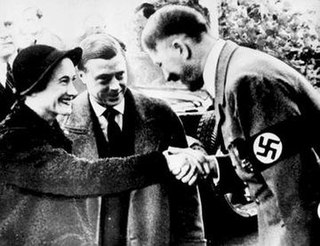
Prince Edward, Duke of Windsor, and Wallis, Duchess of Windsor, visited Nazi Germany in October 1937. Edward had abdicated the British throne in December 1936, and his brother George VI had become king. Edward had been given the title Duke of Windsor and married Wallis Simpson in June 1937. He appeared to have been sympathetic to Germany in this period and, that September, announced his intention to travel privately to Germany to tour factories. His interests, officially researching the social and economic conditions of the working classes, were against the backdrop of looming war in Europe. The Duke's supporters saw him as a potential peacemaker between Britain and Germany, but the British government refused to sanction such a role, opposed the tour and suspected that the Nazis would use the Duke's presence for propaganda. Prince Edward was keen for his wife, who had been rejected by the British establishment, to experience a state visit as his consort. He promised the government to keep a low profile, and the tour went ahead between 12 and 23 October 1937.

Beginning in 1925, some members of higher levels of the German nobility joined the Nazi Party, registered by their title, date of birth, NSDAP Party registration number, and date of joining the Nazi Party, from the registration of their first prince (Ernst) into NSDAP in 1928, until the end of World War II in 1945.

Horcher is a restaurant in Madrid, Spain. It moved to Madrid in 1943 having originally opened in Berlin, Germany, in 1904. It was a popular restaurant with the elite of Nazi Germany.


